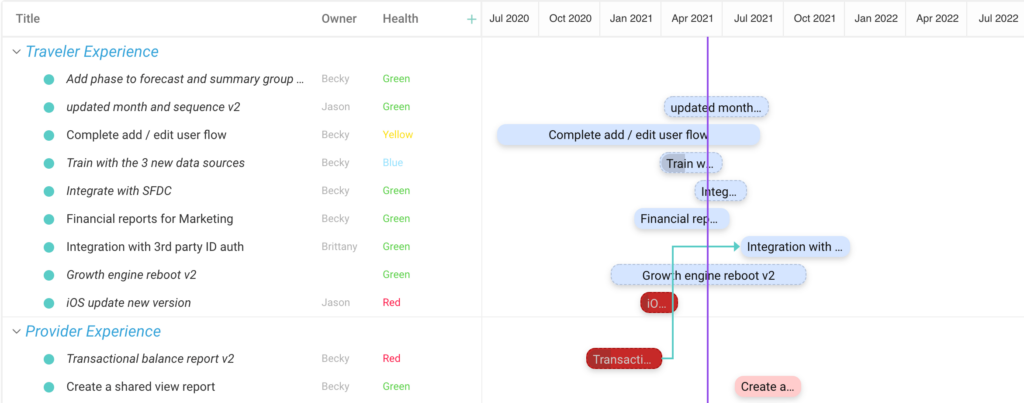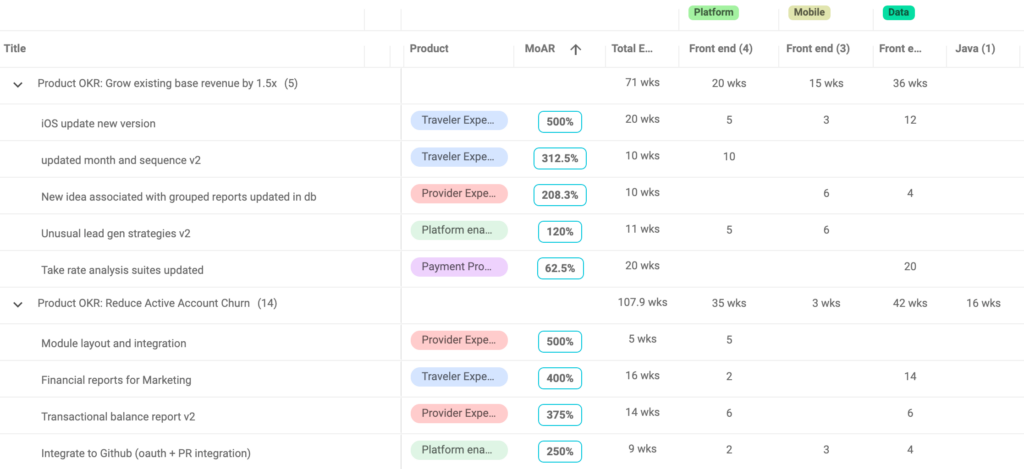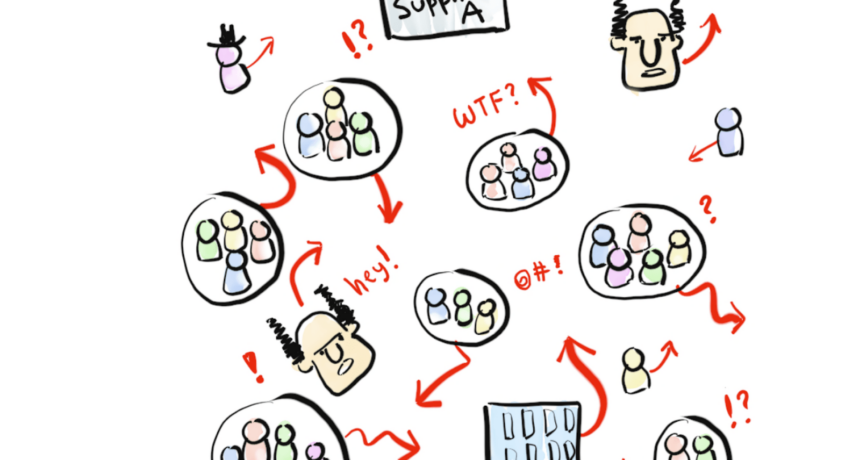Did you know 90% of product teams rely on other teams to complete their products? Portfolio dependencies aka roadmap dependencies can be a hidden killer to even the best-orchestrated product roadmaps.
Portfolio dependencies are difficult to spot, hard to coordinate, and even more challenging to keep track of, causing a cascading effect when things change. Dependencies can also cause delays and impact other roadmap items, having a much more widespread impact than the individual features involved. Overall, portfolio roadmap dependencies are a key risk to product delivery.
What Are Roadmap Dependencies?
Here are the most common types of dependencies:
- Feature dependencies – you need to complete another feature first to enable the ideal user experience
- Technical dependencies – code needs to be completed first for more efficient development
- Resource dependencies – you need resources/ skillsets outside of your current team
- External dependencies- you need partners/ vendors outside of the company
How Do You Effectively Manage Roadmap Dependencies?
To effectively manage roadmap dependencies, you need to identify, plan, and track them with the right participants throughout your roadmapping workflow. Here are the 5 key steps to follow:
- Identify and log dependencies
- Plan and visualize with sequences
- Account for resourcing needs
- Track the evolution and progress of dependent features or projects
- Initiate the trade-off discussion and share broader impacts as needed
Let’s Break it Down
1. Identify and log dependencies – it takes product knowledge and tech-savvy participants to identify feature or technical dependencies, but what fails a roadmap is not being able to document and track them. A good product portfolio tool allows you to log and visualize dependencies so you’re not surprised down the road.
2. Plan and visualize with sequences – visualizing dependencies in sequence can help you organize the roadmap better. In Dragonboat, you can choose to show or hide an external team’s dependencies. So you can see cross-team dependencies for quarterly portfolio planning and progress discussion, but view only your roadmap for day-to-day tracking.

3. Account for resourcing needs – this is one of the most challenging parts of planning, especially if your roadmap requires multiple teams or resources. Check out the allocate then prioritize approach for tips on prioritizing with Responsive PPM.
For example, the screenshot below shows how various features from different product teams need resources from multiple teams. Account for cross-team needs during planning to drive product alignment and prevent “agile madness” during team execution.

4. Track the evolution and progress of dependent features/ roadmap items. Though time-consuming, this is essential. Modern PPM tools with integration to execution tools allow you to automate and roll up progress tracking so you can set alerts on key changes and delays.
5. Initiate trade-off discussion and share with a broader audience – dependent roadmap items may not appear high on the prioritization list/ score. Avoid delays from invisible dependencies by reflecting key roadmap items in planning.
Digital products are complex and often contain one or more of the four types of dependencies. Having the right product portfolio management tool in place can help you easily identify, plan and track dependencies. Dragonboat has helped thousands of product teams streamline dependency planning and automate tracking to become more outcome-focused. Book a demo to learn more about our solutions.




